Managing playgroups in a dog daycare is far more nuanced than simply letting dogs run loose together.
A well-structured playgroup system ensures a safe, fun environment for dogs while giving their parents peace of mind. On the other hand, poorly organized groups can result in stressed-out dogs, increased chances of injuries, and dissatisfied clients. Let’s explore how you can create balanced and harmonious playgroups by focusing on the right approaches and avoiding common pitfalls.
The Importance of Assessing Each Dog
 Understanding each dog’s temperament is key to building successful playgroups. Dogs, like people, have distinct personalities, and not all will thrive in the same environment. When a new client joins, it’s essential to conduct a thorough behavior assessment to understand their pet’s social tendencies. Observe how the dog reacts to new environments, strangers, and other dogs. Factors like breed traits, age, and energy levels should play a role in determining which playgroup will suit them best.
Understanding each dog’s temperament is key to building successful playgroups. Dogs, like people, have distinct personalities, and not all will thrive in the same environment. When a new client joins, it’s essential to conduct a thorough behavior assessment to understand their pet’s social tendencies. Observe how the dog reacts to new environments, strangers, and other dogs. Factors like breed traits, age, and energy levels should play a role in determining which playgroup will suit them best.
Key factors to consider during an assessment include:
- Social tendencies: Does the dog enjoy interacting with others, or are they more independent?
- Energy level: Is the dog high-energy, moderate, or laid-back?
- Triggers: Are there specific situations or behaviors that cause stress or aggression?
- Play style: Does the dog prefer gentle play, roughhousing, or chase games?
By tailoring your groupings to the needs of individual dogs, you create a foundation for positive interactions.
Keeping Playgroups Manageable
One of the most critical elements of playgroup structure is size. Smaller groups allow for better supervision and reduced chances of conflict. While every facility has different space and staff limitations, it’s crucial to avoid overcrowding. Too many dogs in a confined space can create tension and stress, leading to unnecessary disputes.
To keep things running smoothly, consider your staff-to-dog ratio. Groups should be small enough that each dog gets attention and any potential issues can be swiftly addressed. Starting with smaller playgroups for new dogs can also ease them into socialization and reduce anxiety.
Monitoring Behavior: The Role of Body Language
 Your team’s ability to interpret canine body language can make or break your playgroup’s success. Dogs constantly communicate through subtle cues, from wagging tails to lip licking or growling. By watching for these signals, your staff can intervene early to prevent problems.
Your team’s ability to interpret canine body language can make or break your playgroup’s success. Dogs constantly communicate through subtle cues, from wagging tails to lip licking or growling. By watching for these signals, your staff can intervene early to prevent problems.
For instance, dogs showing signs of stress, such as avoiding other dogs or tucking their tails, may need a break. On the flip side, reinforcing calm and positive behaviors through gentle praise or redirection helps establish a positive play environment. Regular monitoring is essential to maintaining harmony in any playgroup.
Common Mistakes to Avoid
While there are many ways to get playgroups right, there are some key mistakes to avoid. First, mixing dogs with vastly different energy levels can lead to frustration and even injuries. Pairing a rambunctious puppy with a laid-back senior dog, for example, rarely ends well. Instead, design groups that cater to similar play styles and temperaments.
Avoid these common pitfalls:
- Mixing mismatched energy levels: This can lead to stress and unsafe interactions.
- Ignoring red flags: Signs of consistent aggression or fear should be addressed immediately.
- Overcrowding play areas: Too many dogs in a space increases tension and the likelihood of accidents.
- Forcing dogs into groups: Some dogs are better suited to solo or one-on-one play.
Being mindful of these missteps can make a significant difference in creating a safe and enjoyable play environment for all.
Best Practices for Structuring Playgroups
 To create seamless and enjoyable playgroups, it’s helpful to establish clear categories based on dogs’ needs and personalities. For example:
To create seamless and enjoyable playgroups, it’s helpful to establish clear categories based on dogs’ needs and personalities. For example:
- Small dogs vs. large dogs: Size-based grouping prevents accidental injuries.
- Puppy playgroups: High-energy environments tailored to younger dogs.
- Senior play areas: Quiet zones for older dogs to rest and engage at their own pace.
Training your staff is equally important. Invest in education on dog behavior, body language, and conflict resolution to empower your team. When your staff feels confident, they can step in effectively when play gets too rough or tensions rise.
Finally, set clear expectations for pet parents. Require vaccinations, health screenings, and transparent communication about group policies. Sharing your commitment to safety and well-being will earn their trust and loyalty.
Why Structured Playgroups Matter
A well-organized playgroup doesn’t just prevent problems—it enriches the lives of the pets in your care. Dogs who feel safe and happy are more likely to enjoy their visits, while pet parents will appreciate the effort you put into creating a nurturing environment. Happy pets and satisfied clients ultimately lead to positive word-of-mouth and a thriving daycare business.






